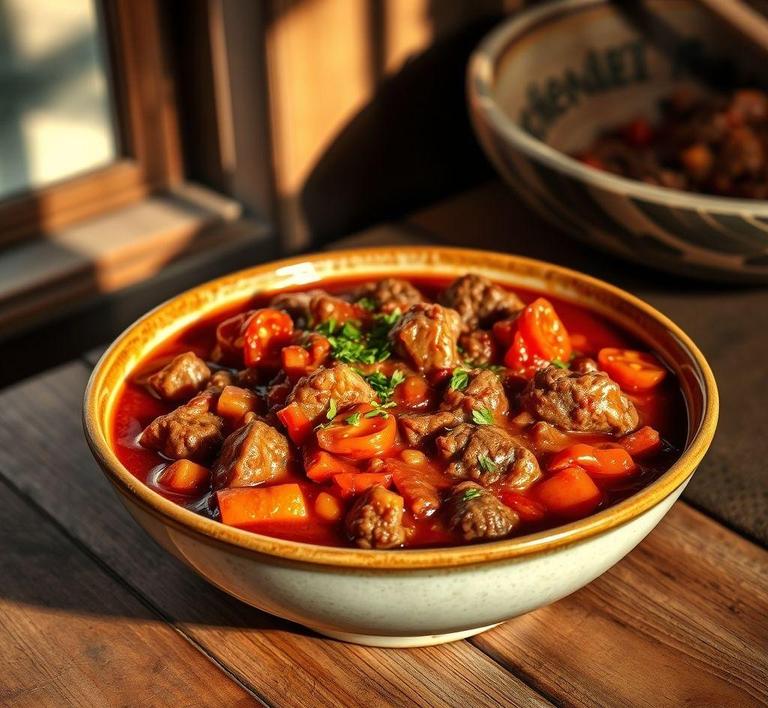Refreezing meat sauce can be a bit tricky, but with the right approach, you can safely preserve your leftovers without compromising on flavor or quality. Whether you’ve made a big batch and have more than you can use, or you’re trying to store extra sauce for future meals, knowing how to properly refreeze meat sauce can save you time and reduce food waste. In this guide, we’ll walk you through the best practices for freezing, thawing, and refreezing your meat sauce so it stays just as delicious when you’re ready to enjoy it again. Let’s dive into the essentials of keeping your sauce safe and tasty!
Can You Refreeze Meat Sauce?

Meat sauce, a rich and savory dish commonly made with ground meat, tomatoes, herbs, and sometimes cream or cheese, can be a perfect make-ahead meal for busy days. Whether it’s a marinara-based sauce with ground beef or a hearty Bolognese, these sauces are beloved for their deep flavors and versatility. But, one question often arises in the kitchen: Can you refreeze meat sauce?
In short, yes, you can refreeze meat sauce. However, the process is not as simple as throwing it back into the freezer after it has been thawed. There are important factors to consider in terms of both safety and quality when deciding whether or not to refreeze meat sauce. For safety’s sake, meat sauce must be handled properly to ensure that harmful bacteria do not multiply during the thawing and refreezing process.
How To Refreeze Meat Sauce?
Refreezing meat sauce requires careful attention to food safety to avoid any risks of foodborne illness or degradation in quality. Here are the key steps to take if you’re planning to refreeze your meat sauce:
- Cool It Down Properly: After you’ve used or thawed the meat sauce, it’s essential to cool it down quickly. You should never leave it sitting out at room temperature for more than two hours. If the sauce is still hot, place the pot in an ice bath or divide it into smaller portions in shallow containers to speed up cooling.
- Ensure It’s Safe to Refreeze: If the meat sauce has been left out at room temperature for an extended period (more than two hours), it’s best to discard it, as harmful bacteria can grow at temperatures between 40°F and 140°F. If it’s been handled properly and kept within safe temperature ranges (below 40°F while thawed), it should be safe to refreeze.
- Use Airtight Containers: When refreezing, use airtight, freezer-safe containers or heavy-duty freezer bags. These will protect the sauce from freezer burn and prevent the flavors from being compromised by exposure to air. Be sure to leave a little space in the container for the sauce to expand as it freezes.
- Label and Date: Always label your containers with the date that the sauce was originally cooked and refrozen. This will help you keep track of how long it’s been in the freezer. Ideally, you should consume the refrozen meat sauce within 3-4 months for the best quality.
- Thawing and Reheating: When you’re ready to use the refrozen sauce, thaw it in the fridge overnight to keep it at a safe temperature. Once thawed, reheat it thoroughly until it’s bubbling hot. Never refreeze meat sauce once it’s been thawed and reheated, as this can lead to quality degradation and safety issues.
Quality Impact
While it is safe to refreeze meat sauce when handled correctly, it’s important to note that doing so can impact the sauce’s quality. The process of freezing, thawing, and refreezing can cause changes in texture, flavor, and overall appeal of the sauce.
- Texture Changes: One of the most noticeable impacts of refreezing is a change in texture. Sauces that contain dairy (like cream, cheese, or butter) can separate when frozen and thawed, resulting in a grainy or curdled consistency. Similarly, meat can become mushy or dry after the freezing and thawing process, losing its tender bite. This is particularly true for sauces that are thicker or have vegetables that break down more easily.
- Flavor Deterioration: While freezing preserves the basic flavor of the sauce, repeated freezing can diminish its overall taste. The subtle flavors of herbs and spices may lose their potency, and the rich taste of the meat can become more muted. Additionally, the acid from tomatoes in sauces like marinara or Bolognese can become more pronounced or overly tangy, altering the overall balance of flavors.
- Freezer Burn: If not properly sealed, meat sauce can develop freezer burn, which occurs when the sauce is exposed to air. Freezer burn can cause parts of the sauce to dry out, resulting in unpleasant, tough, and discolored areas. This is particularly noticeable on the surface of the sauce, but it can affect the texture and flavor throughout the entire batch.
- Separation of Ingredients: Ingredients like olive oil, tomato paste, or fats can separate from the sauce upon thawing, making the sauce appear greasy or unevenly mixed. Stirring and reheating can usually help recombine some of the ingredients, but some loss of smoothness and creaminess may still occur.
Refreezing meat sauce is indeed possible, but it comes with some important considerations. If you’ve handled the sauce carefully, ensured it’s cooled properly, and frozen it in airtight containers, you can safely refreeze it. However, be aware that there will likely be some impact on the texture and flavor of the sauce, especially if it contains dairy or is rich in meat. While the overall taste and consistency can deteriorate after refreezing, the sauce should still be perfectly edible as long as it’s been stored and thawed safely.
If you’re hoping for the highest quality experience, it’s best to limit how often you freeze and refreeze meat sauce. If possible, use smaller portions, so you don’t have to refreeze the entire batch. In any case, when handled properly, refrozen meat sauce can be a convenient and safe way to enjoy your homemade creations at a later date.
Is It Safe To Refreeze Meat Sauce?
Refreezing meat sauce can be a bit of a gray area for many home cooks. On the one hand, it’s convenient to have leftovers available for a quick meal later, but on the other hand, there are important food safety concerns to consider. The safety of refreezing meat sauce largely depends on how it was handled and stored after the initial cooking and freezing.
When you freeze meat sauce, the temperature at which it’s frozen plays a crucial role in preserving its safety. Freezing meat sauce prevents bacteria from growing, but once it’s thawed and reheated, any bacteria present can begin to multiply again. Refreezing the sauce after it has been thawed increases the risk of foodborne illness, especially if the sauce was not properly heated to a high enough temperature or if it was left at room temperature for too long.
However, if meat sauce is properly cooled, stored in airtight containers, and thoroughly reheated to a boiling point (165°F/74°C) before refreezing, it’s generally considered safe to refreeze, albeit with a slight loss of quality. The texture and flavor of the sauce may degrade due to the change in consistency of the fats and liquids, and vegetables or herbs may become mushy after multiple freeze-thaw cycles. The sauce may also become a little watery or separate upon reheating.
Key Guidelines For Safe Refreezing
- Meat sauce should not be refrozen if it has been left at room temperature for more than two hours.
- Always reheat to a temperature of at least 165°F (74°C) before refreezing.
- Make sure the sauce is cooled quickly after cooking-within two hours-before freezing.
Signs That Meat Sauce Should Not Be Refrozen
It’s not always easy to tell when meat sauce has gone bad or is unsafe to refreeze. However, there are a few clear indicators that you should avoid refreezing it. Here are some common signs that your meat sauce should not be refrozen:
- Unpleasant Odor: If your meat sauce smells sour, rancid, or off in any way, it’s a strong sign that bacteria have started to grow. Even if the sauce looks okay, don’t risk refreezing it or eating it. The scent is a clear warning of spoilage.
- Changes in Texture or Appearance: If you notice that your meat sauce has separated or developed an unusual slimy texture after being thawed, it may not be safe to refreeze. A watery or curdled sauce can indicate that the fat has separated, and the sauce has gone bad.
- Mold Growth: This is a definitive sign that your meat sauce is no longer safe to eat. If there are any visible mold spots on the surface of the sauce, discard it immediately. Mold can thrive on food that has been improperly stored or left out for too long.
- Unusual Color: While some color change may occur during the freezing and thawing process, drastic changes-like a greenish or grayish hue-are signs of spoilage. If the meat sauce looks “off”, it’s best to toss it.
- Time Lapse: If the meat sauce has been stored for an extended period, either in the fridge or freezer, the risk of bacterial growth increases. Always check the “use by” dates or how long the sauce has been in the freezer. Refreezing can only be done safely within a reasonable window of time.
Common Refreezing Mistakes
Refreezing meat sauce is tricky, and there are a few common mistakes that can make the process unsafe or affect the quality of the dish. Avoid these errors to ensure the safety and flavor of your food:
- Not Cooling the Sauce Quickly Enough: One of the most common mistakes is allowing the sauce to cool too slowly before freezing. Meat sauce should be cooled to room temperature within two hours of cooking, and ideally, you should cool it even faster by placing the container in an ice water bath or dividing it into smaller portions. Slow cooling creates an environment where bacteria can thrive, which is a major food safety risk.
- Freezing and Thawing Multiple Times: Refreezing meat sauce multiple times is not recommended, as each freeze-thaw cycle degrades the quality and increases the chances of bacterial contamination. Once you thaw meat sauce, use it within a few days and only freeze it once. If you find that you have more sauce than you can eat, portion out smaller servings before freezing to avoid multiple cycles of thawing and refreezing.
- Refreezing Without Reheating: If you thaw meat sauce and don’t bring it to a rolling boil (or at least to 165°F), you risk not killing bacteria that may have grown during the thawing process. Always reheat the sauce thoroughly before refreezing to ensure it is safe.
- Not Using Airtight Containers: Storing meat sauce in containers that are not airtight can lead to freezer burn, which affects both texture and taste. The sauce can become dry and discolored, and the flavors will diminish over time. Use high-quality freezer bags or containers designed for freezing to keep your sauce in the best condition possible.
- Storing Sauce for Too Long: Even though freezing preserves food, meat sauce shouldn’t be stored in the freezer indefinitely. While it can be safe to freeze for 3-4 months, the longer it sits in the freezer, the more its quality will suffer. Always label your containers with dates so you know when it was first frozen.
Tips And Tricks
While it’s entirely possible to refreeze meat sauce under the right circumstances, there are a few tricks and tips you can use to make the process easier and safer:
- Portioning: If you often find yourself with leftover meat sauce, portion it into smaller containers before freezing. This allows you to thaw only the amount you need rather than refreezing a large batch multiple times. You can even use ice cube trays for tiny portions of sauce to use in smaller quantities when cooking.
- Freeze Sauce in an Even Layer: When freezing your sauce, try to spread it in a thin, even layer in your container or freezer bag. This helps it freeze faster and more evenly, reducing the chances of bacterial growth. It also makes for quicker thawing when you’re ready to use it.
- Cool in Shallow Containers: For quicker cooling, divide your sauce into shallow containers. This allows the sauce to cool faster and more evenly, preventing any part of it from staying in the temperature “danger zone” for too long.
- Use Freezer-Safe Bags: For optimal freezer storage, use freezer-safe bags instead of plastic containers. Not only do these take up less space, but they also prevent air from getting trapped around the sauce, which helps prevent freezer burn.
- Label Everything: Always label your containers with the date and contents. It’s easy to forget when you froze the sauce, and labeling helps ensure you use it within a safe timeframe.
- Consider Freezing with Added Ingredients: If your meat sauce contains pasta, vegetables, or cream, be aware that some ingredients might not freeze well. For instance, dairy-based sauces can separate or curdle when frozen and reheated. Consider freezing the meat sauce without these ingredients and adding them after reheating.
Conclusion
Refreezing meat sauce is possible, but it requires careful attention to food safety and quality. By following proper guidelines-such as quickly cooling, reheating to the proper temperature, and using airtight containers-you can safely refreeze your sauce. However, be mindful of the potential for quality loss, especially in terms of texture and flavor, after multiple freezing cycles.
Signs of spoilage-like off smells, changes in color or texture, and mold-should always be taken seriously, and in those cases, it’s best to discard the sauce to avoid foodborne illness. By avoiding common mistakes like improper cooling or repeated freeze-thaw cycles, you can enjoy your meat sauce safely and keep meal prep both convenient and delicious.


